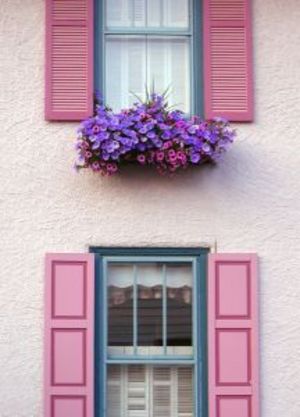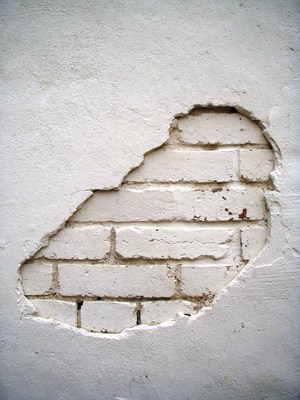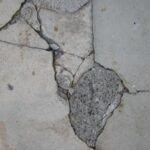Stucco is a common type of plaster traditionally made from limestone, water, and sand. Today it is more regularly made with finely ground cement rather than limestone. Traditional Stucco is highly durable and even repairs its own cracks, but can be susceptible to wood rot in the supporting structures. Modern stucco is less durable and cracks more often, but it still an attractive and strong building material. Stucco is found in both the exterior and interior of many homes across the globe and was once used in ancient Greek art.
Stucco especially when used on exterior surfaces, needs to be sealed in some way as it allows water absorption, which is what leads to rotted wood beneath the stucco coating. One of the ways to do this is to paint the stucco, unfortunately when using regular paint on stucco surfaces peeling often occurs from water vapors from within the house pushing on the paint layers. To remedy this problem a special type of paint fittingly called stucco paint is needed to paint stucco.
With the proper materials and a little expertise, painting stucco is an easy task that can increase the value of your home as well as allow you to personalize and beautify your space. This simple guide on how to paint stucco will provide both of these things.
Other than using a different type of paint, painting stucco walls is much like painting a regular wall. Many of the same tools are used. Remember to always work top to bottom when re-painting, ceiling, walls, and then floors.
What You will need:
*Pressure Washer
*Putty knife and wire brush in the case of previously painted stucco
*Stucco mix or latex acrylic caulk for minor repairs
*Masonry Primer or acrylic primer
*Stucco Paint:
Remember not to attempt to use regular paint on stucco. It will not only peel and crack but can allow damage to the stucco. Stucco will also absorb a degree of regular paint causing you to use more paint and so spend more money.
*A paint brush
*A paint roller with an extendable handle and tray or paint sprayer
*A ladder
For indoor jobs or to protect any landscaping near your home you may also want a painting cloth or an old sheet. In many case you can purchase old sheets from thrift stores for even less than painting cloths.
Preparing stucco to be painted is actually more work intensive than the painting itself but is vital to a quality outcome. First, you will need to clean the surface. On exterior stucco surfaces, this is easiest using a pressure washer. Be sure to keep the sprayer on a low setting as a high-powered spray can create small dimples in the stucco that can lead to damage that is more extensive. Also be careful to keep the sprayer at least a foot from the surface. On interior stucco, you’ll have to do it the hard way using a bucket of soapy water. You may find a sponge mop helpful. Allow the stucco to dry completely; this may take up to twenty-four hours. If the stucco was previously painted you will need to remove all existing paint. This can be done with a putty knife and wire brush. Painting over existing paint can result in peeling, cracking and an uneven, unattractive looking job.
Next, inspect the surface for cracks and damage. You can repair smaller damage with stucco mix or latex acrylic caulk. For extensive damage, you will probably want to call a contractor.After repairs re-clean the areas which you have worked on.
Now it’s time to start painting. Begin by using your ladder to cut in the walls. This means to use your paintbrush to paint around the edges around two to three inches thick, in the corners in the case of more than one wall, and around any fixtures, windows, or doors. However when painting stucco the cut -in should be larger at 4-6 inches thick. This will result in a better seal.
To paint using a roller:
Dip your roller but do not squeeze away excess paint. You want your coat to be thick. Do not use the classic zig-zag pattern or dry roll to spread the paint. Apply paint using a downward motion. Repeat until the entire wall is covered and then repeat. Stucco should always receive two coats of paint.
To paint using a sprayer:
This requires two people or one quick painter. The surface should be sprayed once working top to bottom and then rolled with a roller to ensure the paint saturates all the texture. The paint needs to be rolled over with a paint roller before it dries. A second coat can simply be sprayed on.
You may also enjoy:
How to Paint Cabinets
How to Paint Concrete





